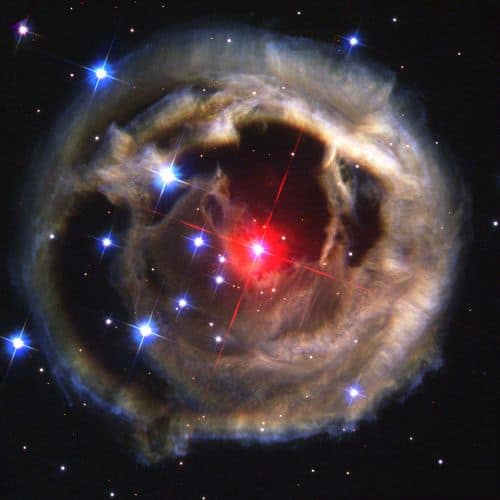The Hubble Space Telescope was launched on 24 April 1990. To celebrate its 30th anniversary in space, Physics World is publishing a series of blog posts exploring Hubble’s 10 best images, as chosen by the science journalist and editor Keith Cooper

Nobody paid much attention to V838 Monocerotis, a nondescript star 20,000 light years away, until January 2002. Then, suddenly, it brightened by a factor of 600,000, only to fade again that April. Nobody knows exactly what happened. Maybe it collided with another star. Maybe it swallowed a planet whole, or experienced an enormous thermonuclear pulse.

Hubble’s best shots: The Horsehead Nebula
What we do know is that it was spectacular: the star produced an extraordinary flash of light that propagated into space and reflected off the gas and dust surrounding it. Hubble captured these “light echoes” in glorious detail, showing them expanding outwards over a period of months and years. The light reflecting off this interstellar material is still being analysed, and it could hold clues as to what happened to V838 Mon.



